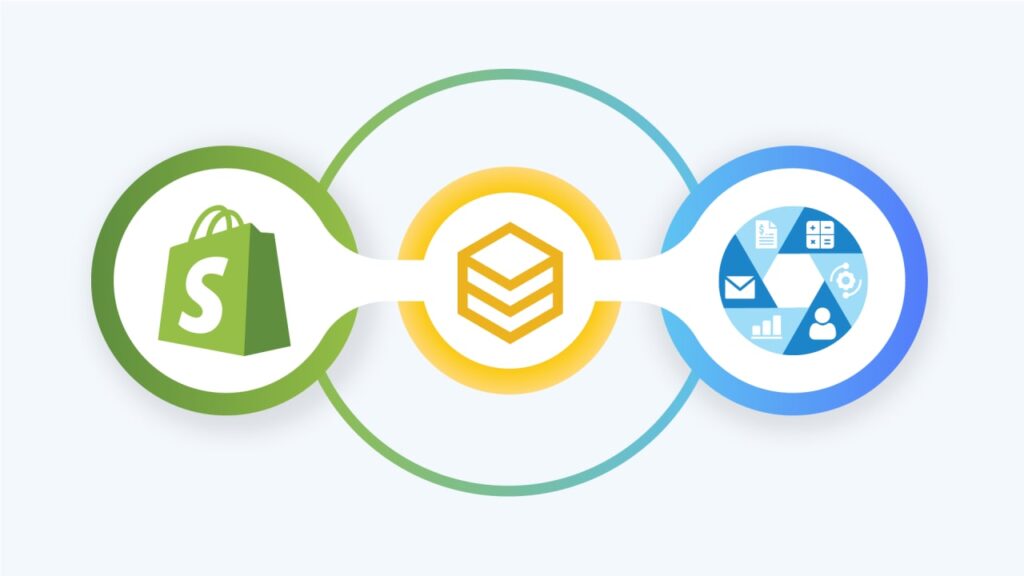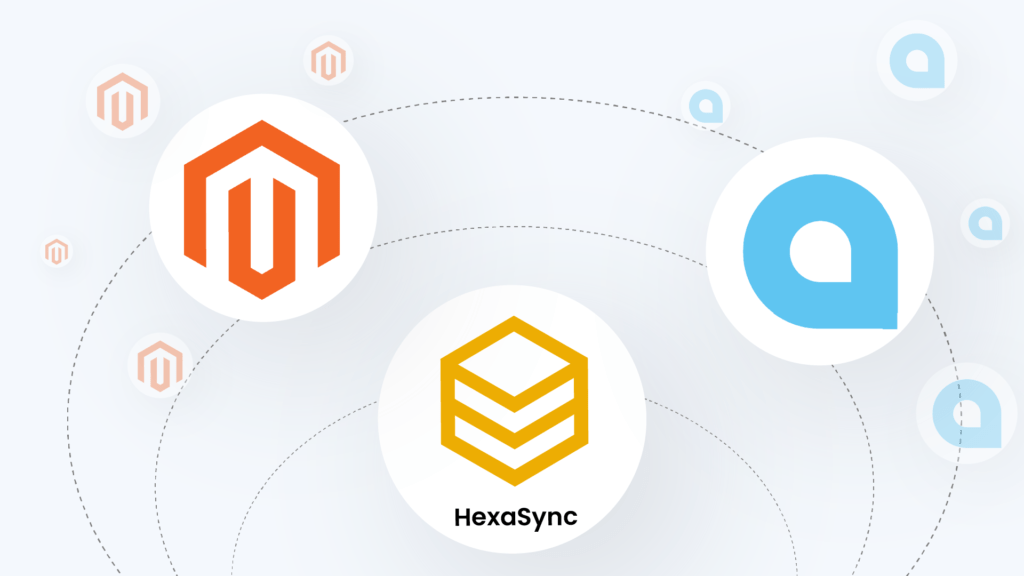When enterprises start selling on eCommerce websites, choosing the right platform can have a significant effect on your future business strategies and growth plans. And there are a lot of differences between Magento and Shopify, two of the world’s most successful eCommerce platforms. Choosing the suitable one for your needs can be a difficult task. As a result, this post will help you in comparing Shopify vs Magento to determine which is best for your online store – Is it Shopify or Magento?
Table of Contents
Shopify vs Magento: Table of Contents
The right digital commerce platform can dramatically transform how you do business online and offline. What works best can be determined by your objectives, budget, and level of expertise. Therefore, when deciding between Shopify and Magento, think about which of these factors matter most to you:
-
- Cost
-
- Scalability
-
- SEO
-
- Ease of use
-
- Point of Sale
-
- Apps and Extensions
-
- Community and Support
Shopify vs Magento Full Feature Comparison
Shopify vs Magento: Popularity
Shopify has the fourth-largest eCommerce market share at 11.43 percent, and Magento is tenth at 1.32 percent, according to Datanyze.
With 591,150 live websites, Shopify has outperformed Magento with 68.174 live websites. This puts Shopify far ahead of Magento in terms of popularity.
The reason why Shopify outnumbered Magento is understandable. Shopify is more beginner-friendly, with a basic user interface. Meanwhile, Magento is more feature-rich but better suited to experienced developers. We will study this factor further in the next part.
Shopify vs Magento: Main Features
Although both platforms deliver a wide variety of features and functionalities that enhance store efficiency and increase sales, they have major differences.
The most noticeable difference between Magento and Shopify is that Shopify is closed-source while Magento is open-source software.
Magento is an open-source eCommerce platform that allows you to modify the source code. This means that merchants can make any code adjustments required after the installation process to apply the software to particular use cases properly. Besides, the open-source software model has increased in popularity, and it has several advantages, including a massive developer community and the ability to be flexible. There are no limits on what you can do as long as you have what it takes. In other words, this is awesome if you are a developer or have the resources to get things done. You might be worried about hiding a development team if you don’t.
On the other hand, Shopify is a closed-source SaaS (Software as a Service) eCommerce platform. It implies that the merchant stitches to the platform’s established standards. Shopify’s internal research and development efforts include automated updates, security fixes, and other technical resources. In addition, Shopify is easy to use for beginners. Give yourself a weekend or a few hours, and you will be ready to go. Nevertheless, as the eCommerce market expands, the closed-source technology’s limitations become apparent. Merchants are restricted by the features on the Shopify roadmap, and platform support response times can be slow.



Shopify Magento Integration



Shopify Bigcommerce Integration



Shopify Wix Integration
Shopify vs Magento: Ease of use
If you choose a platform that is too difficult to use, you will be unable to build the eCommerce store you want, which may be detrimental to your brand’s reputation. Both Magento and Shopify have a user-friendly and well-designed interface.
But when it comes to coding, Magento is more difficult to use than Shopify. Magento is more versatile than Shopify in that it allows you to customize your store with code, but it’s still much more difficult to use – making it difficult for most users to create a store they’re proud of. While Shopify offers a wizard mode that makes it easy for even non-technical users to set up their stores. Users can easily change the basic attributes of the store website without writing a single line of code with Shopify’s drag-and-drop editor and simple tools.
While the Magento platform is simple to set up (multiple languages, payment methods, etc. ), it will necessitate technical expertise and extensive developer support. Magento isn’t ideal for beginners, seasoned eCommerce merchants can find all of the features they need in a flexible, customizable design.
Stick with Shopify if you’re just selling a few items or don’t have much technological expertise. Few beginners will walk into a Magento store and start working right away; you’ll need to spend some time learning how to use it.
→ Shopify is more user-friendly than Magento, but Magento is more flexible than Shopify.
Shopify vs Magento: Pricing Plans
Different platforms have varying budgets. We all know that cost is the stumbling block for both new and existing companies. As a result, the cost must necessarily be included in our study. Shopify vs Magento, which one offers a better price for you?
Shopify Plans
Shopify uses a three-tiered pricing structure. It costs $29 to $299 a month and is fully flexible to your company’s needs. Remember, apart from design and SEO, these should be the only costs associated with your platform. So, in the grand scheme of things, a well-functioning Shopify site could cost a small-to-medium-sized company about $299 per month (before apps and themes.)
Since Shopify is a hosted site, you won’t have to worry about hosting, speed, or maintenance issues. A domain can cost anywhere between a few dollars to several hundred dollars per year, but most domains cost between $10 and $30 per year. Additionally, Shopify charges transaction fees for payment processors such as PayPal, Braintree, and Authorize.net. The premium percentage varies from 2.0 percent to 0.5 percent, with lower transaction fees associated with more expensive monthly subscriptions. This means that Shopify gets a share of any online purchase. If your store receives many transactions, the fees will quickly add up. By using Shopify’s direct payment portal, users can skip these fees.
Magento Plans
Things get a little more complicated when talking about Magento and pricing. It’s an Open Source platform, which means it’s free to use and available in the public domain, which is a big plus. Magento 2 offers a completely free Community Edition and charges a fee based on the needs and size of the e-commerce shop. Therefore, Magento 2 is appropriate for any online shop. However, since Magento is self-hosted, merchants will also need to buy a hosting solution for it, which will cost between $1 and $200 per month.
The total Magento cost depends on the development services you use. Even though consumers will have to pay for hosting monthly, eCommerce store owners will have more choices for hosting solutions best suited to their platform. Indeed, site speed, storage, and the number of items that an online store can accommodate are all affected by hosting, which is critical to a store’s website. They also sell an Enterprise version, the cost of which is determined by your online store’s unique requirements.
→ It’s a tie. Because Magento and Shopify are two completely distinct platforms, their pricing models differ. Magento is an open-source platform, so the expenses will depend entirely on your needs. Otherwise, Shopify offers three fixed-price plans that may appear to be less expensive, but you’ll also need to pay for applications and themes.
Shopify vs Magento: SEO abilities
The key to the success of every modern digitally-driven commerce platform is search engine optimization. Both Shopify and Magento also have extensive SEO capabilities. While Magento is more efficient, Shopify is simpler to use for the average consumer.
Shopify’s SEO is more reliant on apps. The built-in apps can easily generate and auto-populate most SEO options, making the process very easy.
Magento, on the other hand, excels at SEO and comes with plenty of SEO guides and prompts to help you get started. You can change image alt tags (which help Google understand how to categorize an image on the image search platform) and URLs to make it easier for search engine users to find your web pages. All of these are also built-in features.
→ In terms of SEO, Magento beats out Shopify. It has more SEO features built in, such as SEO prompts and the ability to customize URLs. Many of your SEO wants and needs will require you to search for and install apps with Shopify.
Shopify vs Magento: Apps and Extensions
It’s so crucial to add additional capabilities to your online store, particularly if the platform’s built-in features aren’t sufficient for your eCommerce needs. Both Shopify and Magento make it simple to add applications, plugins, and add-ons to your store.
With thousands of add-on extensions, Magento truly stands out in this field (both free and paid options), giving you an almost limitless number of ways to enhance your website with desirable features. This is due in part to Magento’s open-source software, which encourages users to make their own plugins.
Shopify’s App Store has over 1,200 free and paid apps for business purposes such as email marketing, shipping, social media advertising, and more.
Magento Marketplace offers over 5,000 extensions, 1,970 of which are free. For example, integrating your online store with Facebook costs $199, whereas Shopify does so for free.
Shopify charges you a monthly fee while Magento is annual. And Shopify themes are proprietary, so you cannot tweak too much. Regarding Magento, you can still fully customize themes and create your unique store branding.
Since Shopify and Magento are two of the most popular eCommerce platforms, many common third-party systems such as ERP, POS, CRM, Accounting, and payment gateways have been integrated with them. Both systems will handle the majority of the integration. If you are looking for an integration solution for either platform, please reach out to us for a free demo.
Both Shopify and Magento have the potential to extend their features. Its simplicity and breadth of functionality of Magento’s extensions, not their number, makes it the clear winner in this category. A merchant may also hire a Magento developer to build a custom module tailored to their eCommerce business, which Shopify does not allow.
→ Shopify’s App Market is more user-friendly and has more developed apps than Magento Marketplace. While Magento has more extensions than Shopify, installing them requires coding ability.
Shopify vs Magento: Revenue
Total revenue for the full year of 2022 was $4,611.9 million, a 57% increase over 2020. Within this, Subscription Solutions revenue grew 48% to $1,342.3 million, while Merchant Solutions revenue grew 62% to $3,269.5 million. (Source: Shopify)
Adobe Inc. said revenue in its digital experience segment, which contains its Magento Commerce eCommerce software, increased 5% year over year to $826 million for the fiscal second quarter that ended May 29.
Shopify vs Magento: Point of Sale Features
As a key offering of its platform, Shopify will have its own point-of-sale service. Although it can meet some basic requirements, Shopify POS is not the best solution in the market in the long term. Instead, you can build a great end-to-end customer experience with Shopify’s app store, which includes tools for in-store fulfillment, various distribution channels, discounts, and much more.
Magento does not have its own POS system but the market offers a lot of extensions that will meet your expectations as long as you can afford them. However, because anyone can publish Magento extensions, it is critical to thoroughly research each one before using it, as there are still security issues to be aware of.
Shopify vs Magento: Support
As an eCommerce business owner, creating and maintaining a website is just a small part of your work. Thus, if you’re doing it alone without the support of a developer, you’ll want a platform that’s simple to use and maintain.
Shopify provides excellent customer service by offering phone, live chat, and email support 24 hours a day, seven days a week. Shopify’s customer service often responds quickly. Meanwhile, Magento doesn’t provide phone support 24 hours a day, and even other support options cost money. The advice for Magento users is to seek help from the huge Magento group.
You will find tons of valuable resources from the user guides of both Shopify and Magento. Documentations and videos walk you through the process of creating an online store.
→ Magento’s customer service falls short of Shopify’s.
Magento vs Shopify: Community
Hundreds of thousands of live websites are powered by both networks, which are backed up by two large communities. Users gain a significant benefit from having a broad and involved group. You can easily find plenty of professional and talented people whether you are using Shopify or Magento. They will walk you through the process step by step and provide you with valuable tips from basics to advanced setups like Extensions and Apps.
Magento community has unquestionably attracted a sizable developer and design group to its website. Over the last decade, many people have collaborated with Magento and contributed to its growth. Shopify also has a community with lots of experts that can help from basic to advanced settings.
Magento community: 464.269 people (updated 28/03/2022)
Shopify community: 958.913 people (updated 28/03/2022)
Even so, Magento has a much greater group of experts and collaborators than Shopify. Specifically, Magento has attracted many developers, designers, and other professionals who are actively adding to the platform because it is open source. Several companies specialize in setting up, designing, and managing Magento stores, while Shopify is more concerned with the end-user experience.
Shopify vs Magento: Partner Programs
A diverse global network of Magento Solution Partners provides a broad range of design and implementation services across a wide range of verticals, divisions, and geographies. No matter where you are on your digital commerce path, they are ready and able to assist you.
Magento has a large network of partners and developers that provide additional resources to grow your business and help you create commerce experiences. Shopify’s partner network is getting really strong. You can access free training courses, in-depth documentation, and other tools as a Shopify Partner to help you learn about Shopify and develop your company. You’ll also have insider access to Shopify’s product roadmap, demos of forthcoming functionality, and Partner support to answer any questions you or your clients might have quickly.
Still, compared to Magento, Shopify has a smaller community. Due to Magento’s open-source nature, the platform provides merchants with the ability to do highly complex things, which Shopify just doesn’t have.
Conclusion
Consumers in today’s online marketplaces are searching for more than just products; they want to be immersed in exciting shopping experiences. To meet these expectations, the platform solution must be adaptable enough to deliver new brand experiences regularly. Both platforms have advantages and disadvantages. However, deciding which is better between Shopify and Magento is entirely dependent on your circumstances.
You should use Shopify if:
- You want your store to be up and operating as soon as possible.
- You’ve been using an eCommerce website builder (such as Wix, Squarespace, or Weebly) and need to upgrade.
- You’re just getting started in eCommerce but want to grow into a full-fledged eCommerce business.
- You’d enjoy the ease of a one-time payment and the availability of a support team.
You should use Magento if:
- You know how to code and want to create an online store for your medium or large-sized business.
- You desire complete creative flexibility when it comes to coding.
- You already have a global following or international ambitions.
Shopify and Magento are two of the most popular eCommerce platforms. Although they have distinct approaches to handling eCommerce, they both have obvious advantages in some market scenarios. Understanding your business is the first step to making the right decision. Whichever platform you decide is the best fit for your company, we hope you’ll create an online store to be proud of.















































